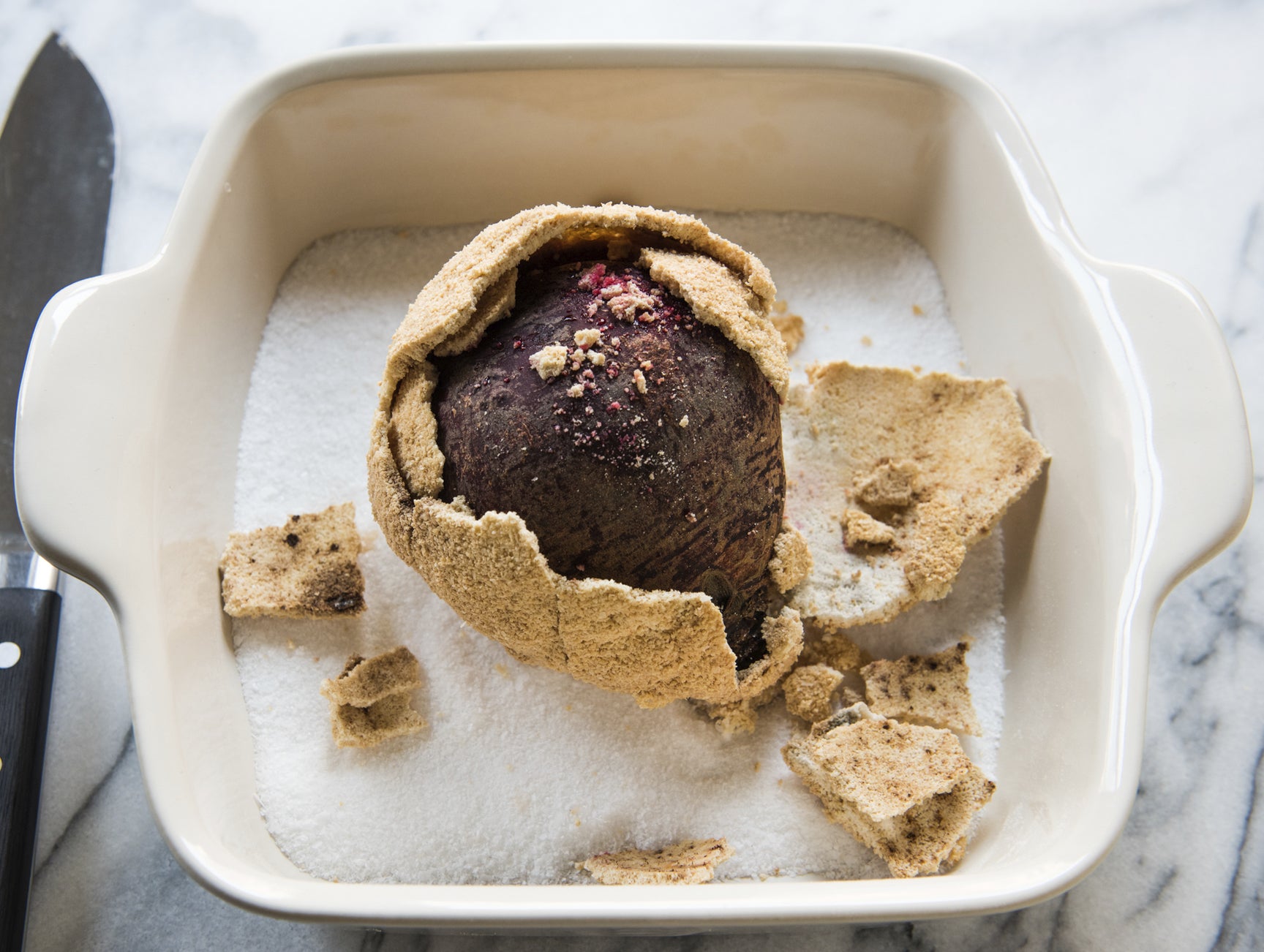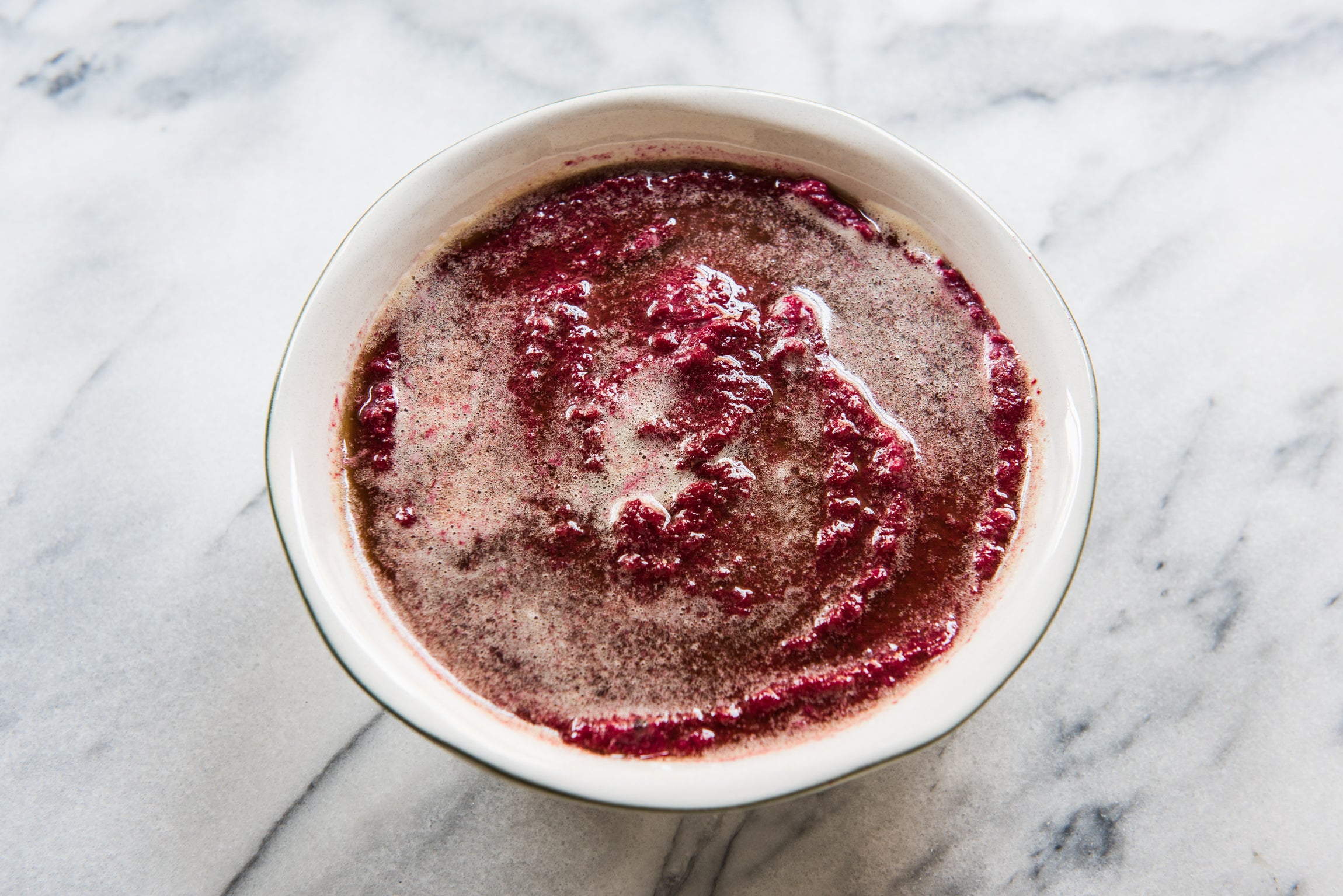
With a few handfuls of cheap salt and an egg white, you can make your vegetables taste richer, juicier, and even more like themselves.
Salt roasting is one of those slightly showy, old-school techniques that’s only trotted out once in a while—mostly when there’s company to impress. Despite this reputation, the cooking method is pretty simple: a whole, skin-on ingredient—vegetables or proteins, like a carrot or branzino—is completely encased in salt and roasted in a hot oven. As it roasts, the salt hardens into a golden-brown crust, which is cracked open right at the table to reveal billowing steam and succulent meat or tender vegetables. Simply for showshopping impact, it’s hard to beat, but salt roasting has more to offer than presentation theatrics.
Since the salt crust creates some insulation against intense heat, the usual candidates for salt roasting are easily overcooked (and very expensive) meats, like beef tenderloin or whole fish. But giving this treatment to root vegetables like potatoes, carrots, and beets is a way to trap in a lot of flavor and moisture. This is because salt roasting isn’t really about the salt, but the cooking environment that it creates. A watertight salt crust absorbs surface moisture but traps the rest inside—cooking the ingredient gently in its own juices. Sure, the outermost layers get an aggressive dose of salt, but everything underneath is the juiciest, moistest, most flavorful version of that ingredient you’ve ever had in your life.

Any vegetable that you’d normally bake or roast whole can be salt-roasted to great effect—baby potatoes, carrots, parsnips, even whole heads of cabbage—but my favorite is the beet. While I’ll never turn down a well-cooked beet, roasted or otherwise, salt roasting has a few key advantages over the standard foil-packet technique. The salt crust keeps all that juice inside the skin where it belongs, rather than pooling around the beet inside the foil and burning; it also prevents the beet from shifting or collapsing as it cooks, so you don’t end up with charred patches on the bottom. This yields a perfectly tender, intensely beet-y beet with just a hint of saltiness—and limitless potential. I like them cubed and tossed into salads, but their almost meaty texture makes exceptional pickles, and their concentrated flavor brings extra depth to a pot of borscht.
This beet-centric riff on chicken liver mousse builds savory richness with sautéed onions and a splash of booze, but it’s also got a quick bay leaf and garlic confit, plenty of lemon, and a touch of warm spice to round it all out. Oh, and two sticks of butter, all of which gets deeply browned.
The result is a creamy, complex, bright pink mousse that is worlds away from most beet dips you’ve probably had in your life. All that acid and spice bounces off the beets’ natural sweetness, while the brown butter and aromatics bring the luscious, buttery richness you’d expect from something that calls itself a mousse. Served with mustard, pickles, and good bread, it’s an unexpected addition to any cheese board.